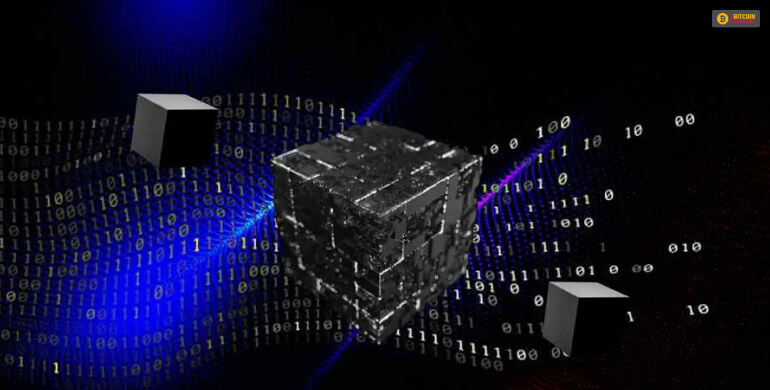Blackbox AI is an artificial intelligence system whose operations and inputs are not visible to users or any other interested parties. In the general sense of the word, a black box happens to be a sort of impenetrable system.
Blackbox AI models help users reach decisions or conclusions without actually providing explanations as to how they even reached that particular point. In such models, any deep network made from artificial neurons is actually able to disperse information as well as make decisions across thousands of neurons.
This results in difficulties that might be difficult to comprehend, like the human brain. Simply put, the internal processes, as well as other contributing factors of Black box AI, remain unknown.
Interestingly, developers created Explainable AI in a specific way for a typical person to understand its decision-making process and logic. This is the antithesis of black-box AI.
How Does Blackbox AI Work?

Typically, black box development conducts the deep learning model. The algorithm responsible for learning collects thousands of data points, A.K.A input. After collecting the inputs, the algorithm correlates particular data features to produce an accurate output.
It’s a 3-step process, really. Here’s an overview:
Step 1:
Any sophisticated algorithm examines massive amounts of data sets before identifying patterns. So, to identify patterns, a massive amount of data is shared on the algorithm. This helps the algorithm to experiment as well as learn independently.
The model, through trial and error, finds out how to change its multiple parameters until it is able to predict an accurate output for several new inputs with the help of a huge amount of inputs along with expected outputs.
Step 2:
After the training, the artificial intelligence model finally gets prepared to start making predictions with the help of real-world information. Detecting fraud with the help of a specific risk score is one instance of a use case for such this type of mechanism.
Step 3:
The machine learning model scales its body of knowledge when it is able to collect extra data over time.
Please Note: It can be difficult for users to determine how Blackbox AI is able to generate its predictions. This is true since the inner workings are not available readily and are, more importantly, self-directed. Just like it is hard to see inside a black-painted box, it is difficult to determine how each model of black box AI works.
In certain cases, techniques like feature visualization and sensitivity analysis can offer a small glimpse into the functioning of internal processes. But in a majority of cases, they stay opaque.
What Are The Implications Of Black Box AI?

A huge majority of different models of deep learning depend on a Blackbox strategy. While Blackboax models are considered to be appropriate in certain circumstances, they can end up posing multiple issues.
Scroll down to check out the major implications of Blackbox AI:
1. AI Bias:
As a reflection of the unconscious or conscious prejudices of most developers, it is possible that a biased opinion toward the AI algorithm can develop easily. And because of this bias, undetected errors can creep through the algorithm.
As a result, the results will be skewed, probably in a way that turns out to be offensive to impacted individuals. Typically, bias towards any algorithm develops from any piece of training data when the AI cannot recognize the data set’s details. In such cases, issues can persist for a long time, enough to damage the reputation of the involved parties. It can also lead to legal actions in the process.
As a result, it is vital that AI developers depend on transparency while building their algorithms. That way, they can protect their algorithms from such damage.
2. Lack Of Accountability And Transparency:
The complications of Blackbox AI-neutral networks can stop people from understanding as well as auditing them accurately, even if they come up with the right results.
Here, the problem is even the developers who made them do not entirely understand how these networks function. In spite of the fact they are ready for some incredible achievements in the artificial intelligence space.
This can turn out to be a big problem in any high-stakes field, such as criminal justice, banking, and healthcare. High-stake fields have long-term and relatively severe impacts on the lives of people. This makes the problem so much more serious.
Also, it can be hard to hold people accountable for any judgment by the AI’s algorithm.
3. Lack Of Flexibility:
Perhaps one of the largest issues with black box AI is its basic lack of flexibility. If the model requires any change for describing any physically comparable object, finding out more about bulk parameters or new rules can take lots of time and effort.
As a result, decision-makers should not really deal with sensitive information with the help of a Blackbox AI.
4. Security Flaws:
Blackbox AI models are open to attacks from multiple threat actors known for taking advantage of the different flaws in the models.
AI can manipulate the input data and information. For example, any attacker can transform the input information and data to impact the judgment of the model to make inaccurate or even harmful decisions.
And It’s A Wrap!
Blackbox AI models are used extensively for developing autonomous vehicles. They play a vital role in different aspects of the operations involving the vehicles. For instance, deep neutral networks enable decision-making capabilities, object detection, and perception.
While Blackbox models have been used in multiple industries, it is interesting to note how you can use this algorithm to analyze and monitor sensor data such as activity levels, blood pressure, and heart rates of patients.
Since this algorithm can easily spot anomalies, provide curated recommendations for leading a good life, and predict health issues. But the sheer lack of transparency raises very serious concerns, especially in the healthcare space.

